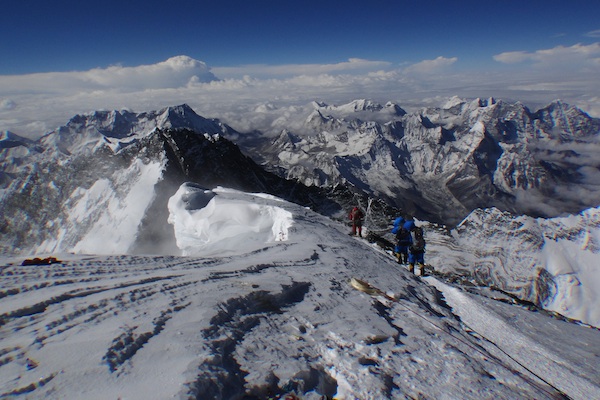This book, as the subtitle explains, makes a bold claim: Griffith Pugh was the ‘unsung hero’ of the 1953 ascent of Everest, his achievements neglected and nearly lost to posterity. Harriet Tuckey is Pugh’s daughter, so this assertion might be little more than a kindly attempt to revive her father’s flagging reputation. Yet, Pugh was clearly no ordinary father, and Tuckey’s advocacy on his behalf is correspondingly unusual.
She casts her father as a ‘uniquely talented, turbulent man,’ ‘truly great,’ ‘difficult, bad-tempered,’ ‘rather cruel’ and ‘totally selfish’. Many pioneers are Janus-faced in this way — those fervent, half-mad, ambitious men and sometimes women who scale mountains, chart the uncharted and meanwhile terrorise or abandon their families.
Tuckey describes her account in deliberately analogous terms, as a ‘personal Everest’:
a voyage of discovery of a daughter provoked to find out about the father she hardly knew and, in so doing, attempt to banish for ever a ghost of past trouble and resentment.
At 43, Pugh was the oldest member of the 1953 Everest team. A former soldier and world-class skier, he had graduated to a career as a scientist, working at the Medical Research Council’s Division of Physiology. Tuckey quotes Michael Ward, Everest 1953 doctor:
There had been 11 previous expeditions to Mount Everest, many of which had excellent leaders, highly skilled climbers and brilliant logistics…and they failed.
Mindful of previous deficiencies, Pugh advocated new oxygen and fluid-intake regimes and a detailed acclimatisation programme. He attended closely to matters of hygiene and diet; he redesigned the high-altitude boots, the tents, the down clothing, the mountain stoves and the airbeds. At every stage, the Everest climbers benefitted from his findings on heat loss, the mechanical needs of the body at high altitude and the physiological and even psychological effects of discomfort.
It is generally known that expeditions succeed or fail at such levels, and Roland Huntford’s The Last Place on Earth, about Scott and Amundsen’s race to the South Pole, makes this point about polar exploration. Amundsen was transfixed by details, and, in extreme conditions, details support or condemn you. Like Huntford, Tuckey suggests that the British exploring establishment at the time looked down, at least officially, on such calibrations, regarding them as ‘unheroic’ and uninteresting to the public.
After Edmund Hillary and Tenzing Norgay gained the summit, the Everest team returned to inevitable media delirium. Tuckey accuses the leader, John Hunt, of pedaling an old-fashioned ‘grit and determination’ myth, at the expense of science, and of Pugh. Hunt’s The Ascent of Everest, was a ‘rousing tale of heroism and derring-do,’ informed by his belief that ‘the potency of the Everest conquest’s romantic heroism would be damaged if too much attention was given to the role played by science’. Equally, the award-winning film based on Tom Stobart’s footage, The Conquest of Everest, depicts Hunt as ‘a tall, straight-backed man…the very model of the heroic leader,’ with Griffith Pugh caricatured for the purposes of ‘comic relief’ as the mad scientist, ‘belittled, his work passed over without mention.’
All this is well argued and meticulously researched. Remorseless at first about her father’s personal failings, ‘come to bury Caesar not to praise him,’ Tuckey deftly converts her tale into an encomium:
Now I am no longer angry. The pleasure of recording his unusual life has banished the last vestige of umbrage from his daughter’s unforgiving heart.
The result is a vibrant, hard-hitting and very moving book, and a fascinating addition to the Everest story.






Comments